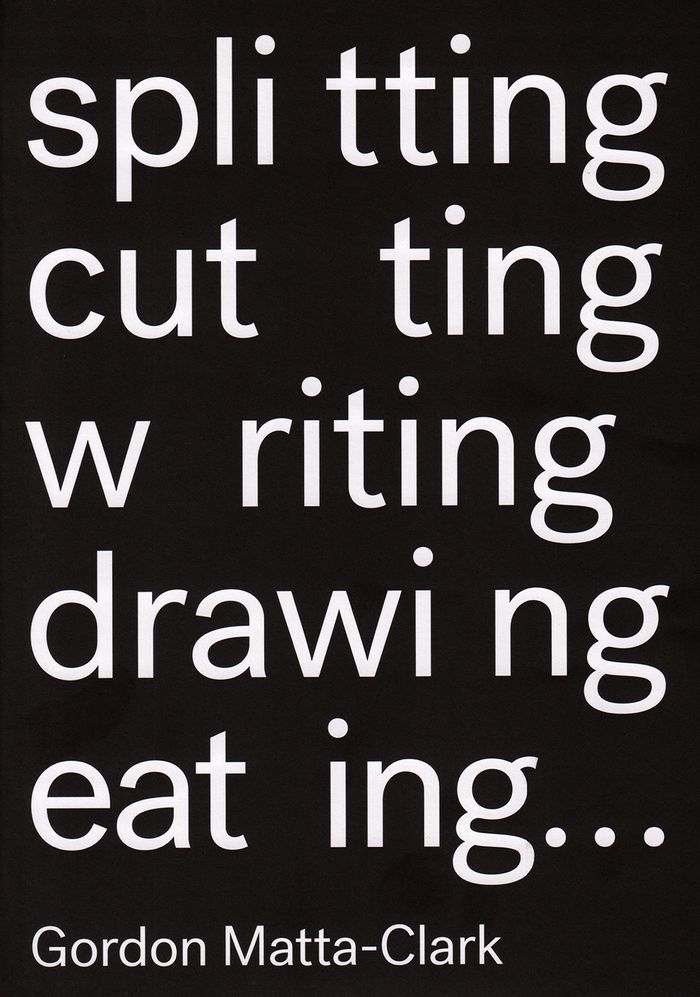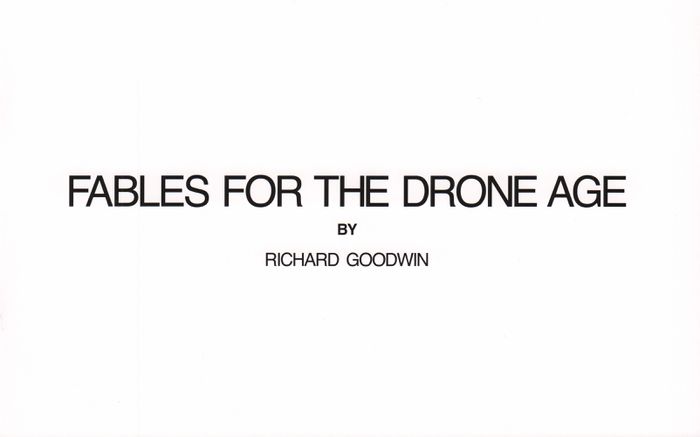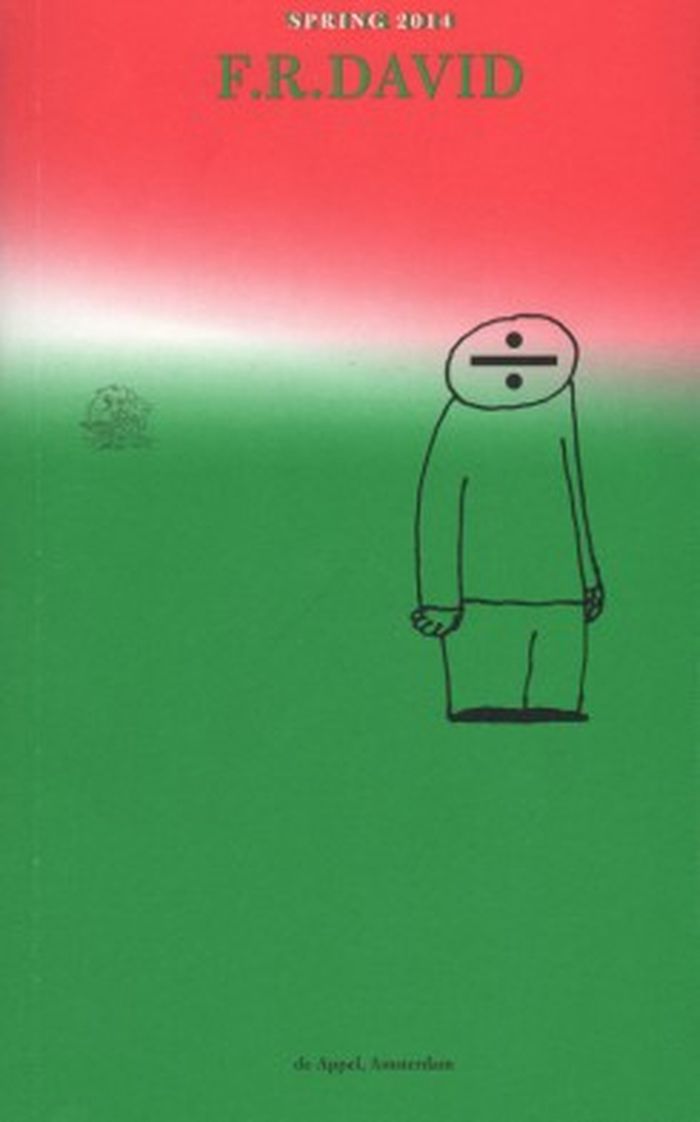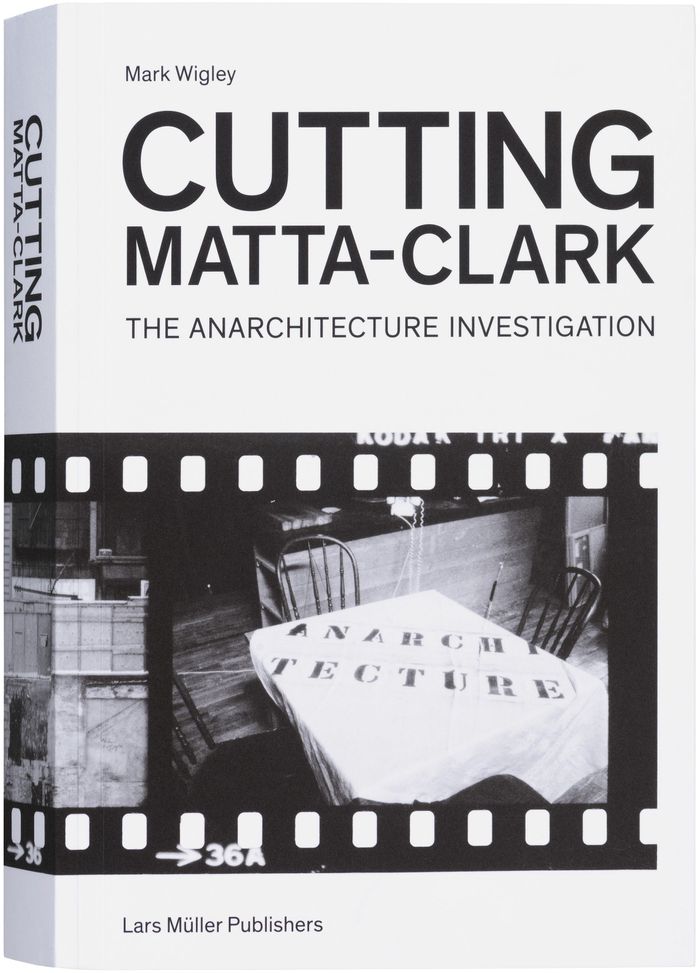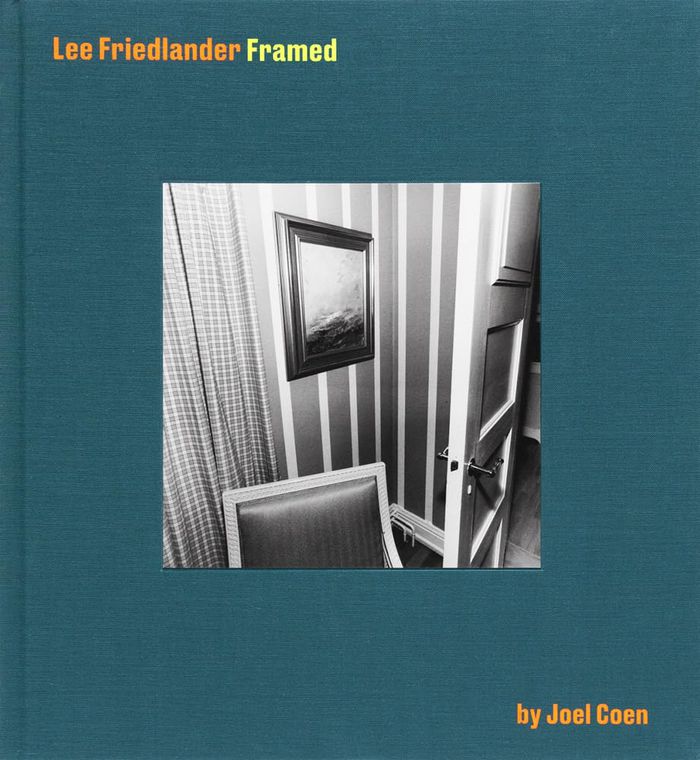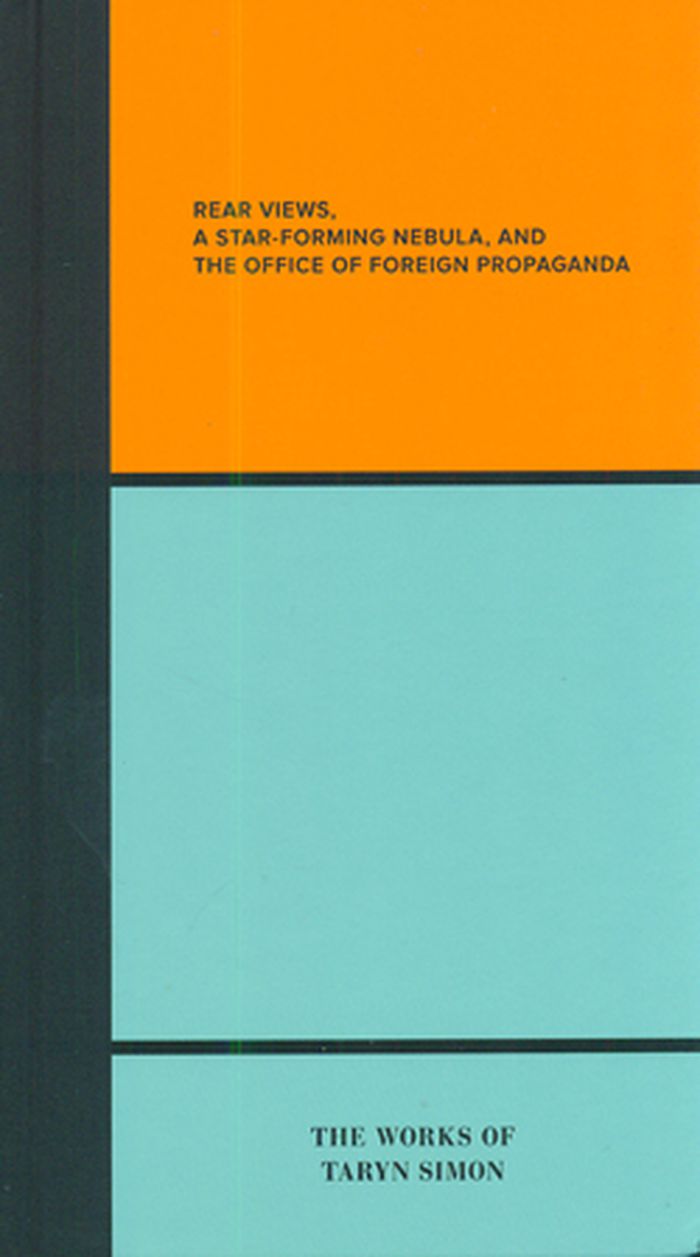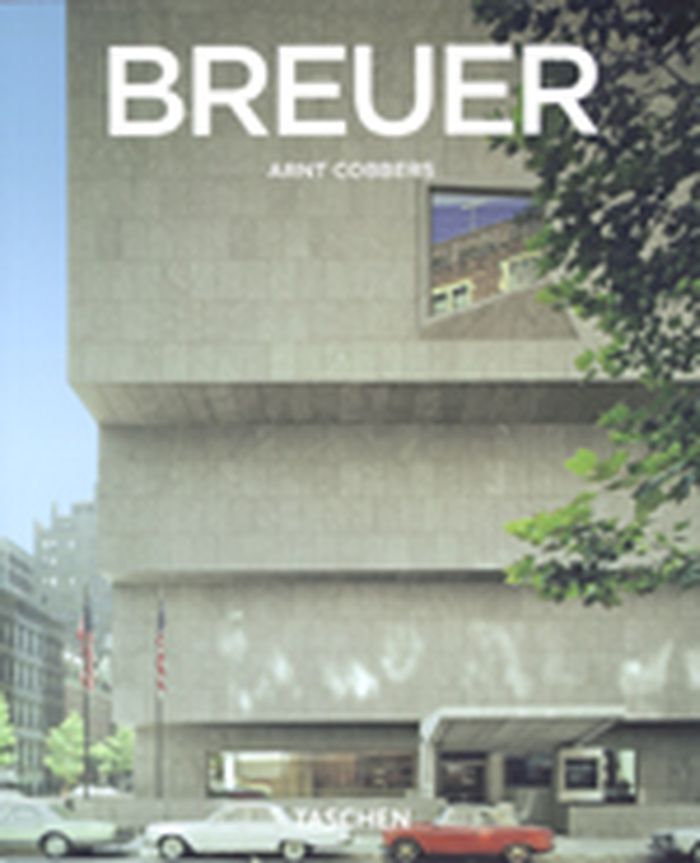$55.95
(disponible sur commande)
Résumé:
American artist Gordon Matta-Clark is perhaps best known for the site-specific artworks he made in the 1970s. His body of work includes performance and recycling pieces, space and texture works, and his “building cuts”. Matta-Clark used a number of media to document his work, such as film, video, and photography, much of which appears in this catalogue, itself published(...)
Gordon Matta-Clark: splitting, cutting, writing, drawing, eating
Actions:
Prix:
$55.95
(disponible sur commande)
Résumé:
American artist Gordon Matta-Clark is perhaps best known for the site-specific artworks he made in the 1970s. His body of work includes performance and recycling pieces, space and texture works, and his “building cuts”. Matta-Clark used a number of media to document his work, such as film, video, and photography, much of which appears in this catalogue, itself published on the occasion of an eponymous exhibition at the Serralves Museum of Contemporary Art, Porto, and Culturgest, Lisbon. The attractively designed book includes numerous of the artist’s own sketches and plans for various works, plus letters and other material that together form an in-depth portrait.
livres
Description:
376 pages : illustrations (some color), maps, plans ; 21 cm
Rotterdam : Nai010 Publishers, [2018], ©2018
Porocity : opening up solidity / by the Why Factory ; Winy Maas and Adrien Ravon with Tihamér Salij, Alexander Sverdlov, Ania Molenda and Arend van Waart ; edited by Javier Arpa ; guest contributions, Arup, Richard Sennett and Paola Viganò.
Actions:
Exemplaires:
Description:
376 pages : illustrations (some color), maps, plans ; 21 cm
livres
Rotterdam : Nai010 Publishers, [2018], ©2018
$47.95
(disponible en magasin)
Résumé:
Published on the occasion of the exhibition at Betts project, 23 June - 28 July 2017. Inspired by Gordon Matta-Clark's 'Splitting' artist book, 1974
Richard Goodwin: fables for the drone age
Actions:
Prix:
$47.95
(disponible en magasin)
Résumé:
Published on the occasion of the exhibition at Betts project, 23 June - 28 July 2017. Inspired by Gordon Matta-Clark's 'Splitting' artist book, 1974
Monographies photo
F.R. David : Spring 2014
$19.95
(disponible sur commande)
Résumé:
The eleventh issue of F.R.DAVID, "All distinctions are mind, by mind, of mind" is comparative, through dividing and splitting, in order to read the design of rhetoric in how we tell stories about our fictional and professional selves. With: Abra Ancliffe, Robert Ashley, Ricardo Basbaum, Michael Gazzaniga, Ken Jacobs, Shane Krepakevich, John Latham, Ezra Pound, Kendra(...)
F.R. David : Spring 2014
Actions:
Prix:
$19.95
(disponible sur commande)
Résumé:
The eleventh issue of F.R.DAVID, "All distinctions are mind, by mind, of mind" is comparative, through dividing and splitting, in order to read the design of rhetoric in how we tell stories about our fictional and professional selves. With: Abra Ancliffe, Robert Ashley, Ricardo Basbaum, Michael Gazzaniga, Ken Jacobs, Shane Krepakevich, John Latham, Ezra Pound, Kendra Sullivan, Sergei Tret'iakov, Marina Vishmidt, Rebecca Wilcox & Sarah Rose and many more.
Revues
livres
$39.95
(disponible sur commande)
Résumé:
"An industry manager who left his white-blue, silver-shimmering world of car bodywork and dove into the pitch-black, mysterious world of architecture for the first time during a competition asked me one day: "Ms Rau, why do architects actually wear black?" Although I was wearing black and I am an architect I didn’t have a spontaneous answer, so I responded: "Ask the other(...)
Why do architects wear black?
Actions:
Prix:
$39.95
(disponible sur commande)
Résumé:
"An industry manager who left his white-blue, silver-shimmering world of car bodywork and dove into the pitch-black, mysterious world of architecture for the first time during a competition asked me one day: "Ms Rau, why do architects actually wear black?" Although I was wearing black and I am an architect I didn’t have a spontaneous answer, so I responded: "Ask the other architects!" That was in 2001, and it is why this small book came to be. I have asked the question at an international level and whenever it seems appropriate ever since. The sometimes amusing and other times programmatic or hair-splitting answers I have received over the last seven years are listed chronologically in this little black volume. Read, and please, don’t ask me why architects wear black!"
livres
octobre 2008, New York
Théorie de l’architecture
$52.50
(disponible sur commande)
Résumé:
This book pursues the legendary but elusive 1974 exhibition, Anarchitecture. Conceived of as an anonymous, photographic statement about the intersection of art and building by the research collective Anarchitecture Group, the exhibition is a constant reference point in discussion, regardless of the almost complete lack of evidence about it. Contrasting the(...)
Cutting Matta-Clark: the anarchitecture investigation
Actions:
Prix:
$52.50
(disponible sur commande)
Résumé:
This book pursues the legendary but elusive 1974 exhibition, Anarchitecture. Conceived of as an anonymous, photographic statement about the intersection of art and building by the research collective Anarchitecture Group, the exhibition is a constant reference point in discussion, regardless of the almost complete lack of evidence about it. Contrasting the hyper-visibility of Anarchitecture Group’s leader, Gordon Matta-Clark, and his canonical work, SPLITTING, with the near invisibility of Anarchitecture, this book takes various Matta-Clark archives, including the CCA’s holdings, as its point of departure and follows the traces of the exhibition. Formulated as a detective story, Cutting Matta-Clark: The Anarchitecture Investigation assembles a comprehensive dossier of previously unpublished evidence including photographs, loose-leaf documents, and notecards, as well as interviews with protagonists of the Anarchitecture Group.
Publications du CCA
$62.00
(disponible sur commande)
Résumé:
A new manifesto from the Why Factory, “Porocity: Opening Up Solidity” makes a case for the intervention of the public realm into the private sphere of the city. The Why Factory raises a critique of the city as excessively closed off, and offers tools for the prying open and aerating of the city in such a way that is socially, environmentally and economically valuable to(...)
Porocity: opening up solidity. the why factory.
Actions:
Prix:
$62.00
(disponible sur commande)
Résumé:
A new manifesto from the Why Factory, “Porocity: Opening Up Solidity” makes a case for the intervention of the public realm into the private sphere of the city. The Why Factory raises a critique of the city as excessively closed off, and offers tools for the prying open and aerating of the city in such a way that is socially, environmentally and economically valuable to its citizens. How can we introduce pockets for encounters, for streams of circulation, for green areas, for tunnels of cooling? What structures can be imagined to allow for this openness? Creating grottos? Splitting towers? Twisting blocks? More than hypotheses, models and examples (as useful as these are), this book even proposes such tools as a computational means of calculating the degree of porosity of architecture, so that urban thinkers and urban doers can turn the critique upon their own cities.
Théorie de l’urbanisme
$94.00
(disponible en magasin)
Résumé:
In his selection of 70 photographs by Lee Friedlander, acclaimed filmmaker Joel Coen focuses on Friedlander’s beautifully strange sense of composition, in which images are off kilter and visually dense, bisected and carved by stop signs and utility poles, store windows and reflections, car doors and windshields or shadows and trees. "As a filmmaker, I liked the idea of(...)
Lee Friedlander framed by Joel Coen
Actions:
Prix:
$94.00
(disponible en magasin)
Résumé:
In his selection of 70 photographs by Lee Friedlander, acclaimed filmmaker Joel Coen focuses on Friedlander’s beautifully strange sense of composition, in which images are off kilter and visually dense, bisected and carved by stop signs and utility poles, store windows and reflections, car doors and windshields or shadows and trees. "As a filmmaker, I liked the idea of creating a sequence that would highlight Lee’s unusual approach to framing?his splitting, splintering, repeating, fracturing and reassembling elements into new and impossible compositions," Coen writes. Featuring work spanning more than 60 years, the book includes selections from some of Friedlander’s most celebrated series, including ''The American Monument,'' ''America by Car,'' ''The Little Screens'' and others, arranged to draw connections between form and composition rather than subject. In an afterword, renowned actor Frances McDormand describes the bond between the two artists: "they both capture and fill frames with sometimes simple and other times chaotically elaborate images that cause us all to wonder."
Monographies photo
Rear views, a star-forming nebula, and the Office of Foreign Propaganda: the works of Taryn Simon
$60.00
(disponible sur commande)
Résumé:
Born in New York in 1975, Taryn Simon is at the forefront of contemporary photography practice. Her artistic medium is based around three equal elements: photography, text, and graphic design, which combined investigate the limitations of absolute understanding, examining the gaps between each element and how this can lead to disorientation and ambiguity. In the last ten(...)
Rear views, a star-forming nebula, and the Office of Foreign Propaganda: the works of Taryn Simon
Actions:
Prix:
$60.00
(disponible sur commande)
Résumé:
Born in New York in 1975, Taryn Simon is at the forefront of contemporary photography practice. Her artistic medium is based around three equal elements: photography, text, and graphic design, which combined investigate the limitations of absolute understanding, examining the gaps between each element and how this can lead to disorientation and ambiguity. In the last ten years she has created a suite of projects which deal with a number of theoretical and visual concerns. Her formal interest in arrangement and cataloguing has seen her experiment with different methods of presentation and display, particularly in A Living Man Declared Dead and Other Chapters (2008-11) in which she travelled around the world researching bloodlines: splitting each work in the final piece up into three segments, she presented large portrait sequences of related individuals on the left, a text panel containing details and narratives in the centre, and 'footnote images' on the right of fragmented pieces of established narratives and other photographic evidence. Simon has also skilfully and poetically tackled aspects of the underbelly of American life. With new and re-published essays by amongst others Salman Rushdie, Homi Bhabha, Daniel Baumann, Tim Griffin, Tina Kuklieski, Hans Ulrich Obrist and Elisabeth Sussman. With an introduction by Simon Baker, Curator of Photography at Tate Modern.
$12.95
(disponible sur commande)
Résumé:
In 1956, Time magazine called him one of the “form-givers of the 20th century“: with his invention of steel-tube furniture, Marcel Breuer (1902-1981) has made his mark in the history of design at the tender age of 23. He started his architectural career as one of the Bauhaus’s most influential architects with the 1932 Harnischmacher House. Even Breuer’s earliest work was(...)
Breuer : 1902-1981 Createur de formes du XXe siecle
Actions:
Prix:
$12.95
(disponible sur commande)
Résumé:
In 1956, Time magazine called him one of the “form-givers of the 20th century“: with his invention of steel-tube furniture, Marcel Breuer (1902-1981) has made his mark in the history of design at the tender age of 23. He started his architectural career as one of the Bauhaus’s most influential architects with the 1932 Harnischmacher House. Even Breuer’s earliest work was marked by the search for a symbiosis between local and global, big and small, smooth and rough. His sparse use of materials emphasized the balance among textures, colors, and shapes. In 1943, he conceived the “binuclear” house concept—the splitting of living and sleeping areas into separate wings—which he first applied to the Geller House I (1944-1946), and which would attain great popularity. After designing the UNESCO headquarters in Paris (1953-1958), reinforced concrete, with its formal plasticity und structural elasticity, continued to give monumental character to buildings such as the Abbey and Campus of St. John’s University in Minnesota (1953-1961), the IBM Research Center in France (1960-1962), and the Whitney Museum of American Art (1963-1966) in New York City. With his keen sense of proportion, shape, and material, Breuer is one of the most important Modernists and is still very much central in the discussion of contemporary architecture.
Architecture, monographies
